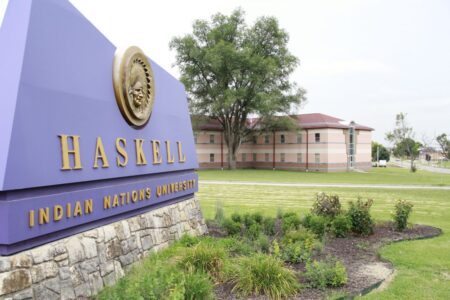As COVID persists, most ambulance patients from surrounding counties are no longer being taken to LMH

photo by: LMH Health
LMH Health, 325 Maine St., is pictured in May 2021.
Most patients in Jefferson and Leavenworth counties who need an ambulance no longer will have the option to be taken to LMH Health, because of COVID-related challenges the Lawrence hospital is experiencing.
Members of the LMH board of trustees were told that while COVID hospitalization numbers at LMH have stabilized somewhat, staffing challenges and other issues have caused the hospital to tighten its policy on the geographic area LMH is serving when it comes to accepting patients via ambulance.
“We try to take care of our patients in Douglas County first,” Traci Hoopingarner, vice president of clinical care and chief nursing officer, told LMH board members Wednesday.
The policy to not take ambulance calls from outside of Douglas County — Jefferson and Leavenworth counties were specifically mentioned counties that historically produce patients for LMH — isn’t quite a blanket policy. Hoopingarner said the hospital is reserving the option to take ambulance patients from outside the county, if the ambulance crew notifies the hospital that the patient is receiving care from a Lawrence-based or LMH doctor.
But in situations where that information can’t be easily determined, chances are the ambulance is going to be directed to another area hospital. Jefferson and Leavenworth counties both border Douglas County, and for some communities — like Tonganoxie in Leavenworth and Perry in Jefferson — LMH is closer to those communities than to hospitals in Topeka or Kansas City, for instance.
Board members weren’t given a timeline on when the restrictions on out-of-county ambulance patients might be lifted.
Hoopingarner said LMH was not turning away any patients who arrived at the door of the emergency room, regardless of where they came from.
Those patients and everybody else, though, may experience some significant wait times. Hoopingarner said patient volume is up at the ER, and wait times have increased. LMH patients who need to be transferred to another hospital to receive more specialized care also may face some extended wait periods.
“We have also had to delay some transfers to other hospitals because of bed shortages in those hospitals,” Hoopingarner said. “We also have received numerous phone calls from various other states and various other places in Kansas and from the Kansas City hospitals that are trying to transfer back to us.”
Hoopingarner said that on Wednesday the hospital was caring for 12 inpatients who had tested positive for COVID and that three of them were in the intensive care unit and two of them were on ventilators. She said 50% were entirely unvaccinated, while another 16% were either partially vaccinated or the vaccination status couldn’t be determined. In round numbers, that would mean roughly eight patients were not fully vaccinated, or it couldn’t be determined whether they were vaccinated, while four patients had been fully vaccinated.
In those numbers — which are just a one-day snapshot — fully vaccinated people make up a greater percentage of the total hospitalizations than what is being reported in other areas that are tracking the number of breakthrough cases. For instance, statistics from Nebraska show that about 5.5% of all hospitalizations in that state since Jan. 1 have come from people who are fully vaccinated. Using numbers that are more recent, Louisiana, for example, reports that over the last week unvaccinated people accounted for 12% of the state’s hospitalizations.
Hoopingarner didn’t provide statistics to the board that went beyond the one-day total, but she generally said LMH’s overall numbers were tracking with national trends.
“Generally, what we are seeing with our vaccinated and unvaccinated patients really aligns with the national level,” she said. “What that says, in short, is vaccines do work in preventing serious illness and hospitalizations.”
Hoopingarner said that while LMH is experiencing pressures from COVID, the hospital hasn’t seen a huge spike or wave of cases, unlike some other facilities.
“It continues to be something that is still concerning, but our numbers have stayed pretty steady over the last three to four weeks and haven’t seen any big jumps,” Hoopingarner said. “We are managing, and the staff has done a great job day to day.”
While the lack of a spike is encouraging, what is less so is that the number of hospitalizations remains significant.
“Since June 15, we have had 121 COVID inpatients,” she said. “So, you know, that is concerning. That is a pretty large number we have seen over the summer.”







COMMENTS